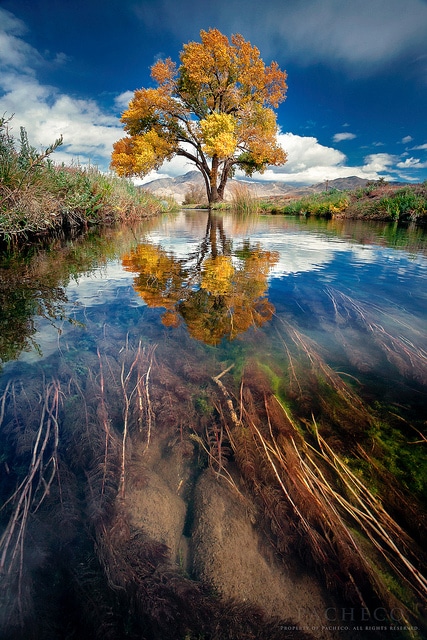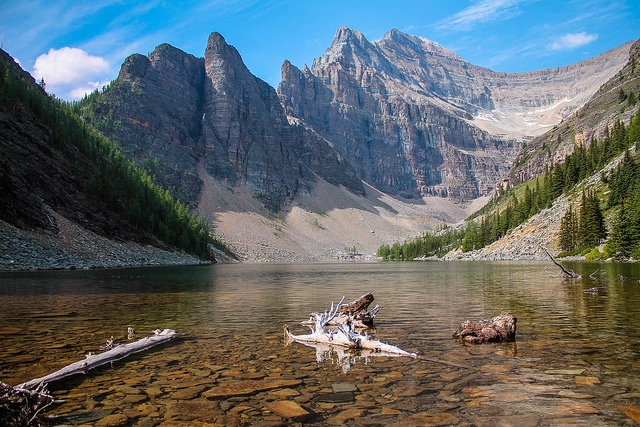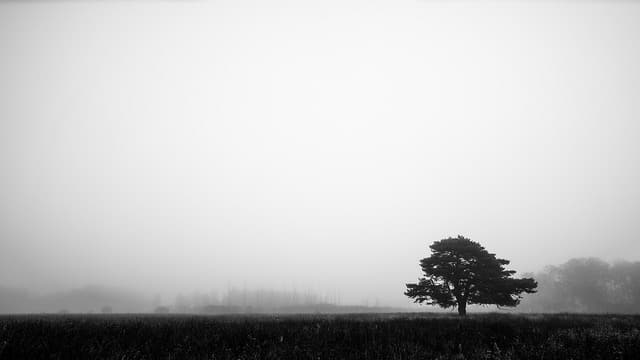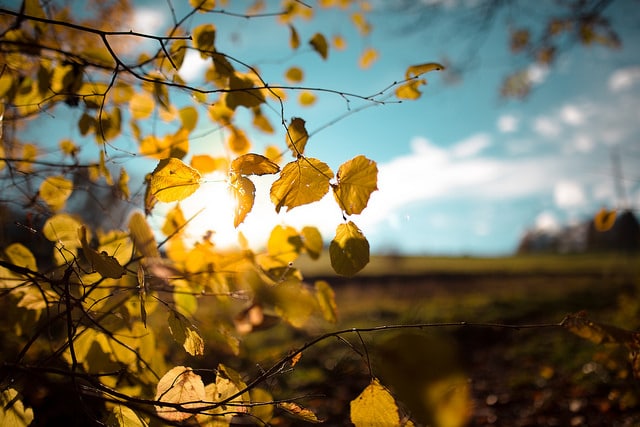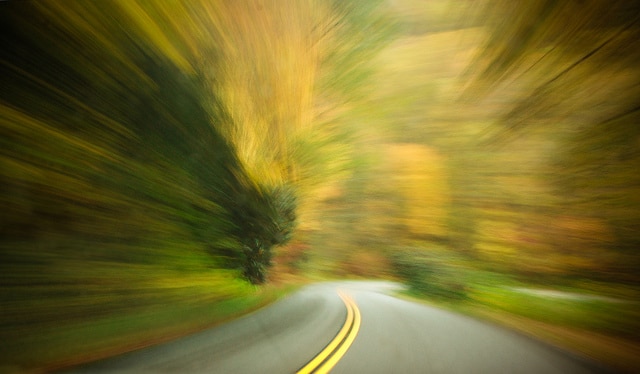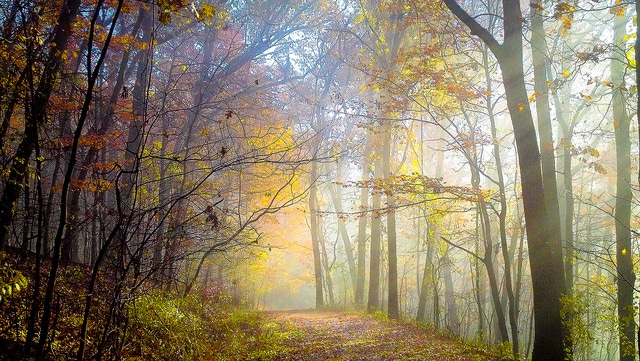“Photography, as a powerful medium …offers an infinite variety of perception, interpretation and execution.” –Ansel Adams
Take a look at any landscape photography book or website –and you’ll find plenty of helpful rules and guidelines to follow. From the rule of thirds to the overwhelmingly popular advice to always use a wide angle –there’s no shortage of advice and tips for landscape photography.
Most of the time, rules are important –and taking the time to learn tried and true photography guidelines is the best way to lay a solid foundation for your photography –helping you to get the best start possible. After all, you’ll need to learn what all those dials and buttons on your camera do, in order to get the most out of it!
But once you’ve mastered some of the rules, and familiarized yourself with the popular techniques –there are really no limits to what’s possible in terms of creativity and personal expression! The rules, while essential for a good foundation –can also serve as a jumping off point –that you can expand upon or break –depending upon your desired results with the composition at hand.
If you’re feeling stuck in a creative rut –or looking for some ideas and inspiration for capturing unique and fun images that are different from the crowd, here’s a look at some of the most common landscape photography guidelines –and tips for breaking them effectively!
Rule #1: The Rule of Thirds
Let’s face it –the rule of thirds can be helpful –and a great way to compose your images. Sometimes, though, a composition may call for the main focal point to be placed in the middle of the image. This is especially true if you’re capturing a subject with symmetry –or for situations where you wish to showcase the grandeur and scale of a subject, compositions that can often be enhanced by placing the main focal point dead center.
Rule #2: Always Use a Wide Angle Lens
A wide angle lens is the go-to lens for landscape photography –and for good reason. Wide angles are excellent tools for capturing sweeping vistas or emphasizing the sense of distance in a composition. However, there are some situations where a zoom –or telephoto lens could come in handy. One example would be if you’re hoping to draw a distant mountain in closer, for example –rather than capture it as a far-away object in the distance. Additionally, if you’re planning to shoot multiple images to stitch together as a panorama –keep in mind that a wide-angle lens will usually distort part of the image –while a telephoto will allow the final result to look more natural.
→ Related reading: Tips for Shooting Landscapes With a Telephoto Lens
→ Related reading: Reviews of the Best Wide Angle Lenses for Canon and Reviews of the Best Wide Angle Lenses for Nikon
→ Related reading: Reviews of the Best Telephoto Lenses for Canon and Reviews of the Best Telephoto Lenses for Nikon
Rule #3: Shoot With the Sun Behind Your Shoulder
Shooting with the sun behind you can help you to ensure that your scene is evenly lit –but with landscape photography, you can’t exactly dictate where the sun hits, and you shouldn’t have to forego capturing an amazing image because the sun is in the wrong spot. In many cases, side lighting can help bring out textural details that otherwise might have been lost, helping to add depth and dimension to your images. Shooting into the sun can be tricky –but can present the opportunity to capture silhouettes with beautiful backlighting.
→ Related reading: Creating Compelling Silhouette Photography
Rule #4: Keep the Horizon Line Straight
While it’s true that keeping the horizon line –and the overall scene straight is an important rule when composing for almost any landscape. However, in some cases –an intentional tilt of the camera can add some drama and interest to your images. This is especially the case when you’re trying to capture architecture, for instance, or a looming tree. Any time you want to showcase the sheer size or magnitude of something, a tilt of the camera can help. This technique can also be used to convey a sense of movement or energy.
Rule #5: Use Leading Lines
Leading lines can be a great way to direct the viewer’s attention through an image and on towards the focal point, or the disappearing point at the horizon. But don’t have to use leading lines in every image that you capture. In some cases, a composition may be able to benefit from a lack of details –and minimal lines. For instance, using empty space can help to create a peaceful, relaxed image –while at the same time the contrast that the negative space provides can serve to direct attention to the main subject –without distracting from it.
Rule #6: Use a Wide Depth of Field
A wide depth of field –and narrow aperture is typically the best option for landscape images –allowing you to ensure that most of the image is clear and in focus. In some cases, however, a narrow depth of field –a wide aperture, may be exactly what you need. A wide aperture is especially ideal for many nature images, allowing you to narrow the field of focus onto one specific area in the composition, throwing the background –or foreground, out of focus.
→ Related reading: How to Create Beautiful Bokeh in Nature Photography
Rule #7: Stabilize Your Camera
While it’s true that for most landscape photography, you’ll want to ensure that your camera is stabilized on a tripod to prevent camera shake; allowing you to capture sharp, clear images –in some cases, intentional camera movement can produce some artistic and fun results. Zooming in or out with your zoom lens while taking a shot is a great way to create a sense of motion and speed, and panning your camera up, or across –can result in an abstract and somewhat artistic image as well. Be sure to use a slower shutter speed to capture the movement.
Rule #8: Avoid Shooting the Same Location
While it is true that exploring and finding new locations can do wonders for your creativity –don’t rule out returning to the same area periodically as well. The great thing about landscapes is that the land is constantly changing –so don’t be afraid to visit old spots and take new images. This is ideal for capturing different lighting conditions –and weather, or for showcasing a change in the seasons.
→ Related reading: 8 Reasons to Re-Visit the Same Locations
While rules are important –knowing how to break them effectively is vital too. Not only will this allow you to create some unique and artistic shots, being able to expand upon the rules can also be a lot of fun –and is a great way to find inspiration and get your creativity flowing –especially if you’re feeling stuck.
License links: CC BY 2.0, CC BY-ND 2.0, CC BY-SA 2.0,


